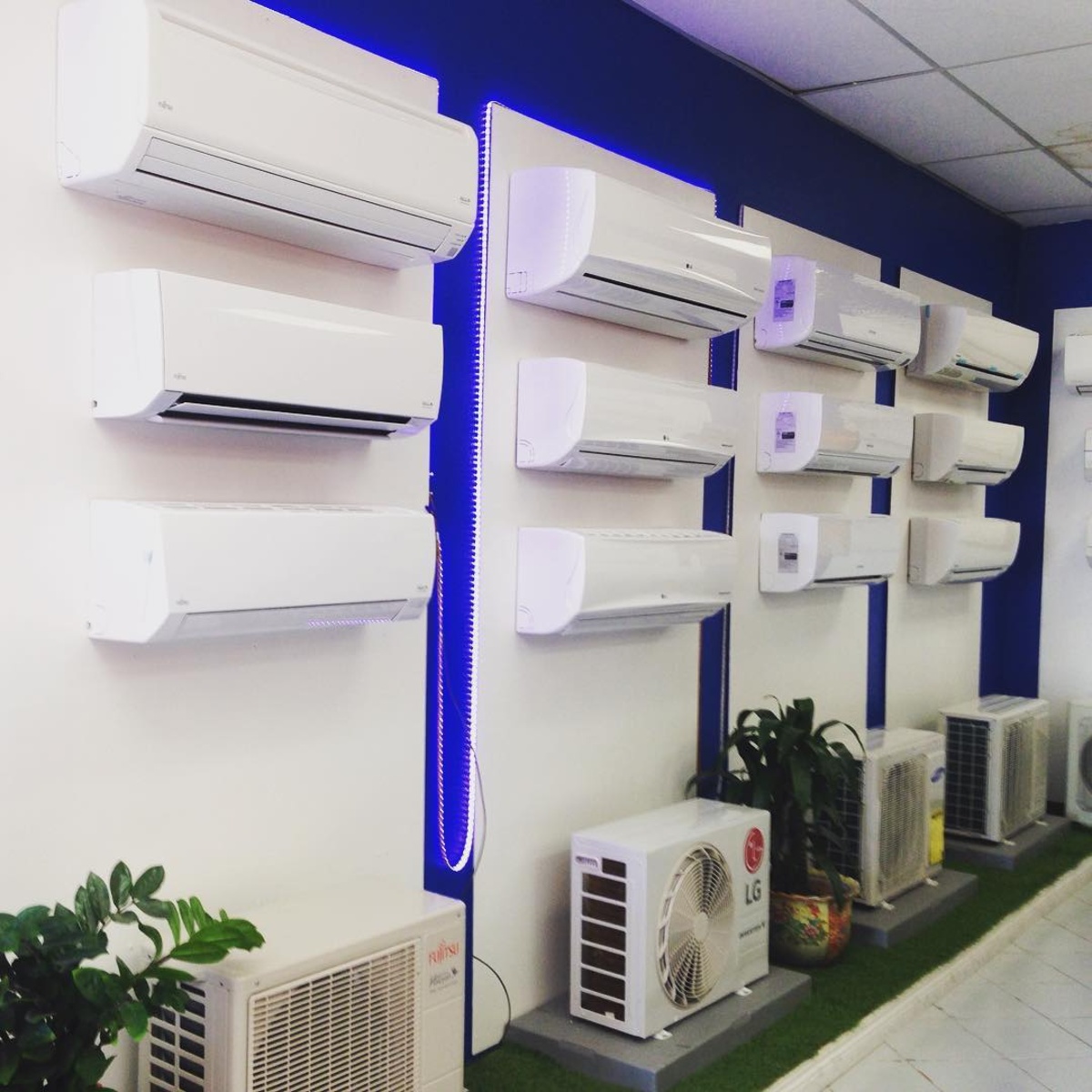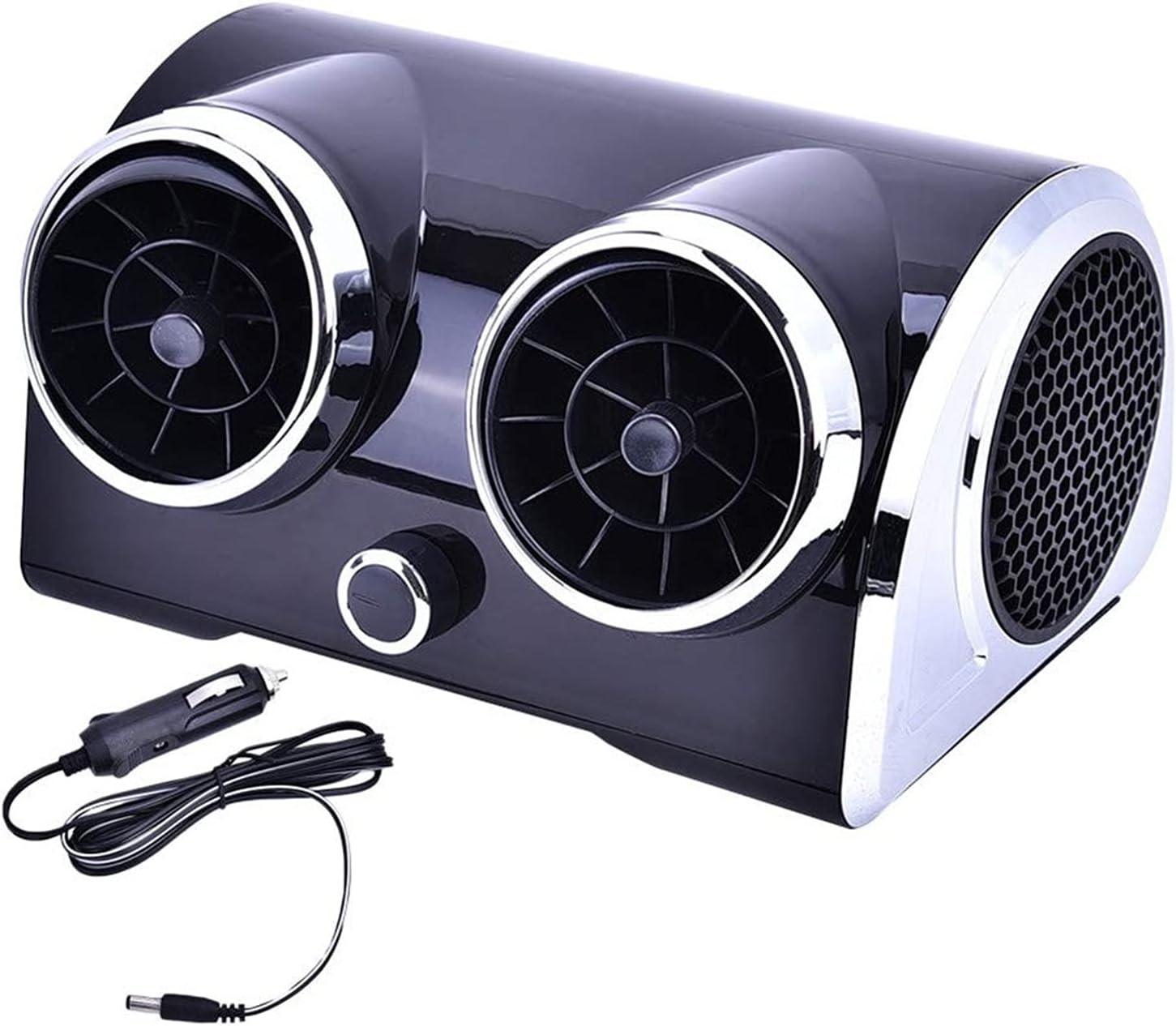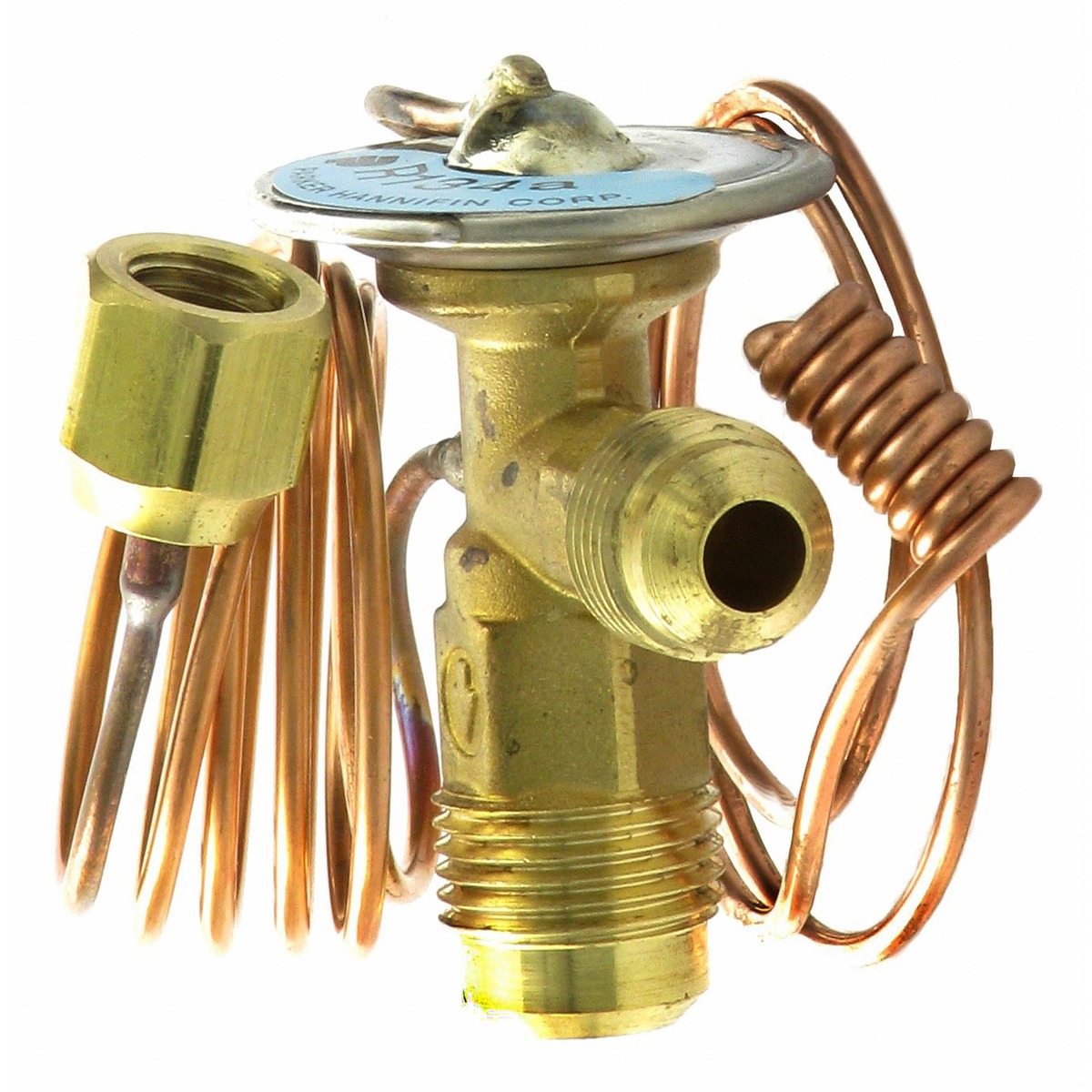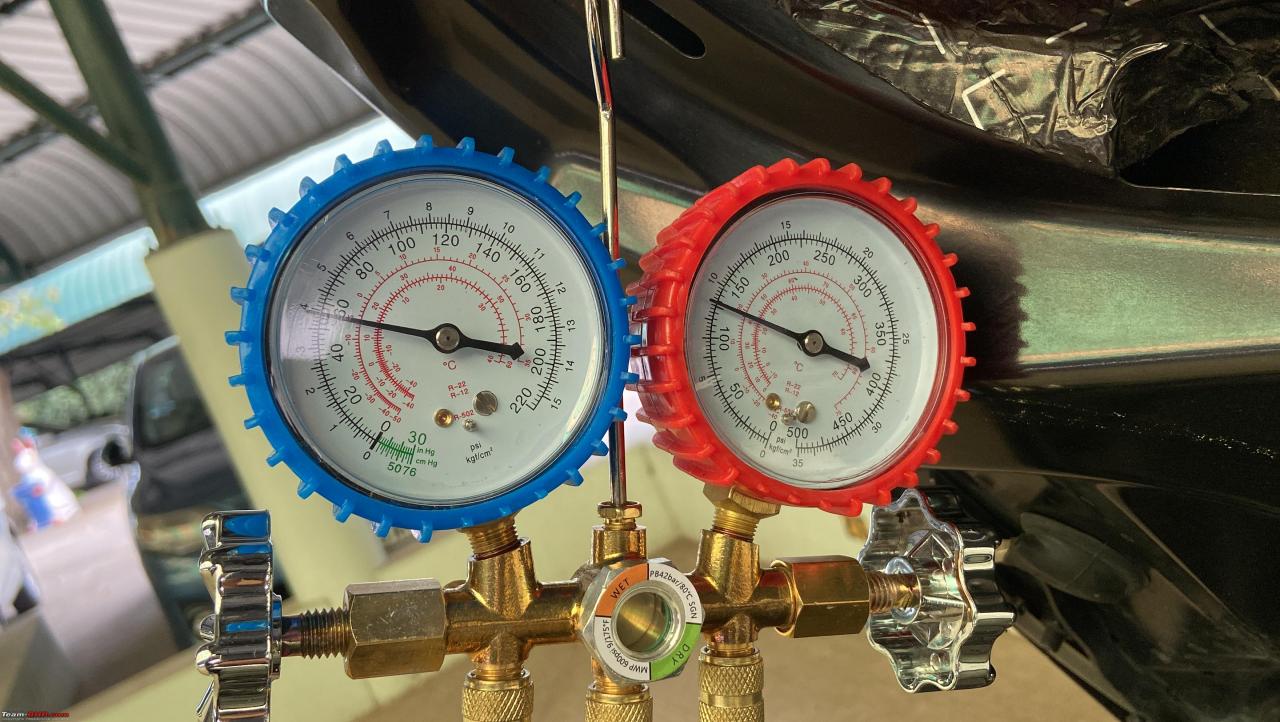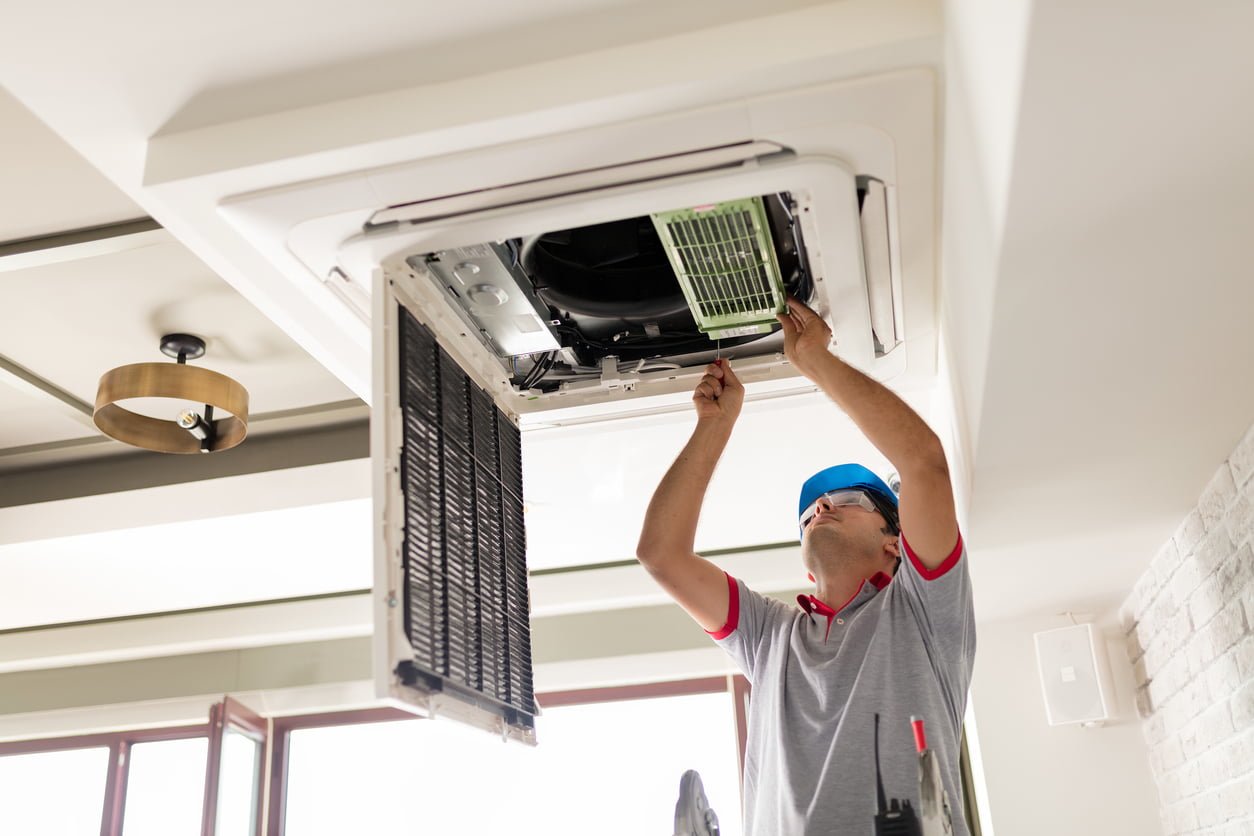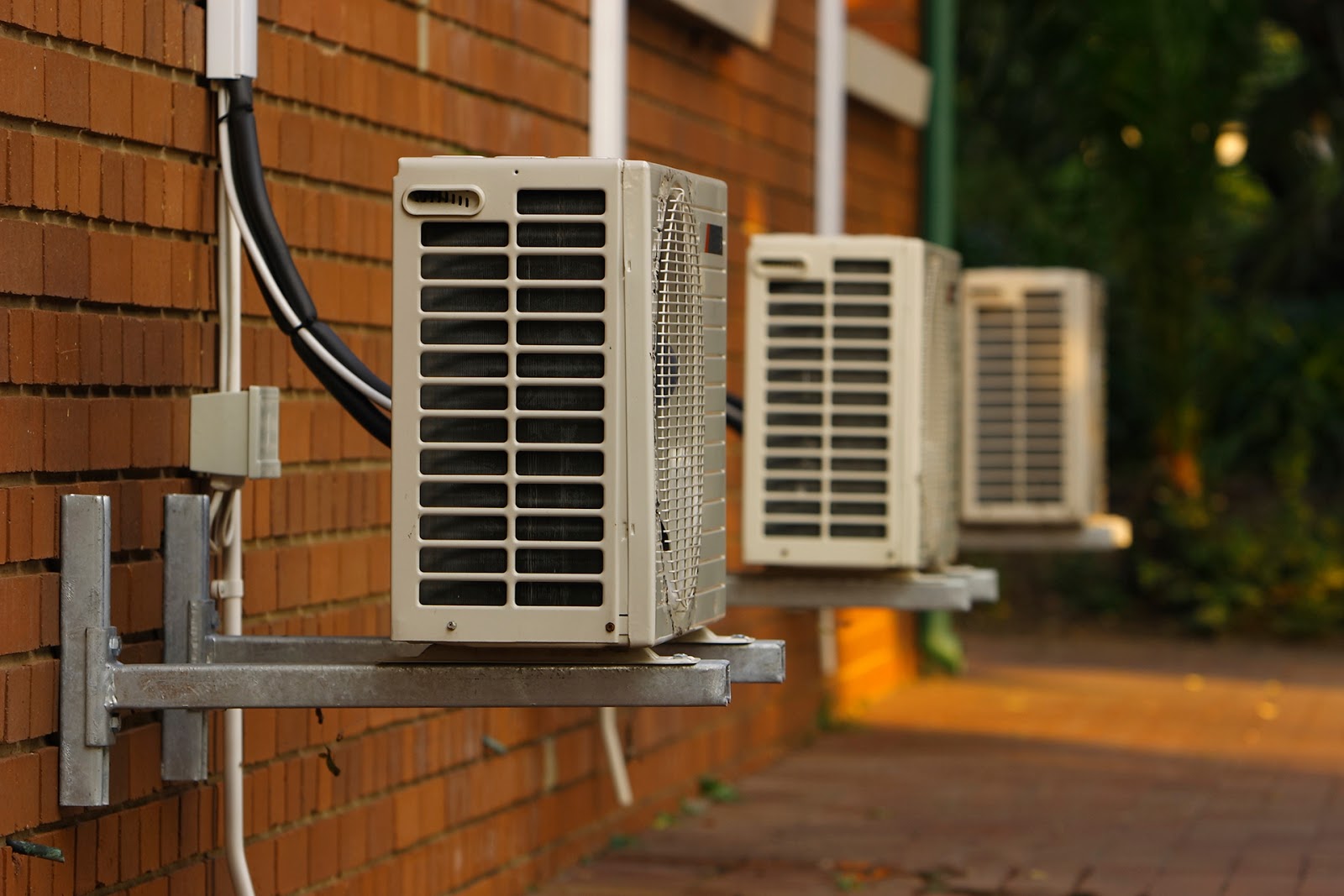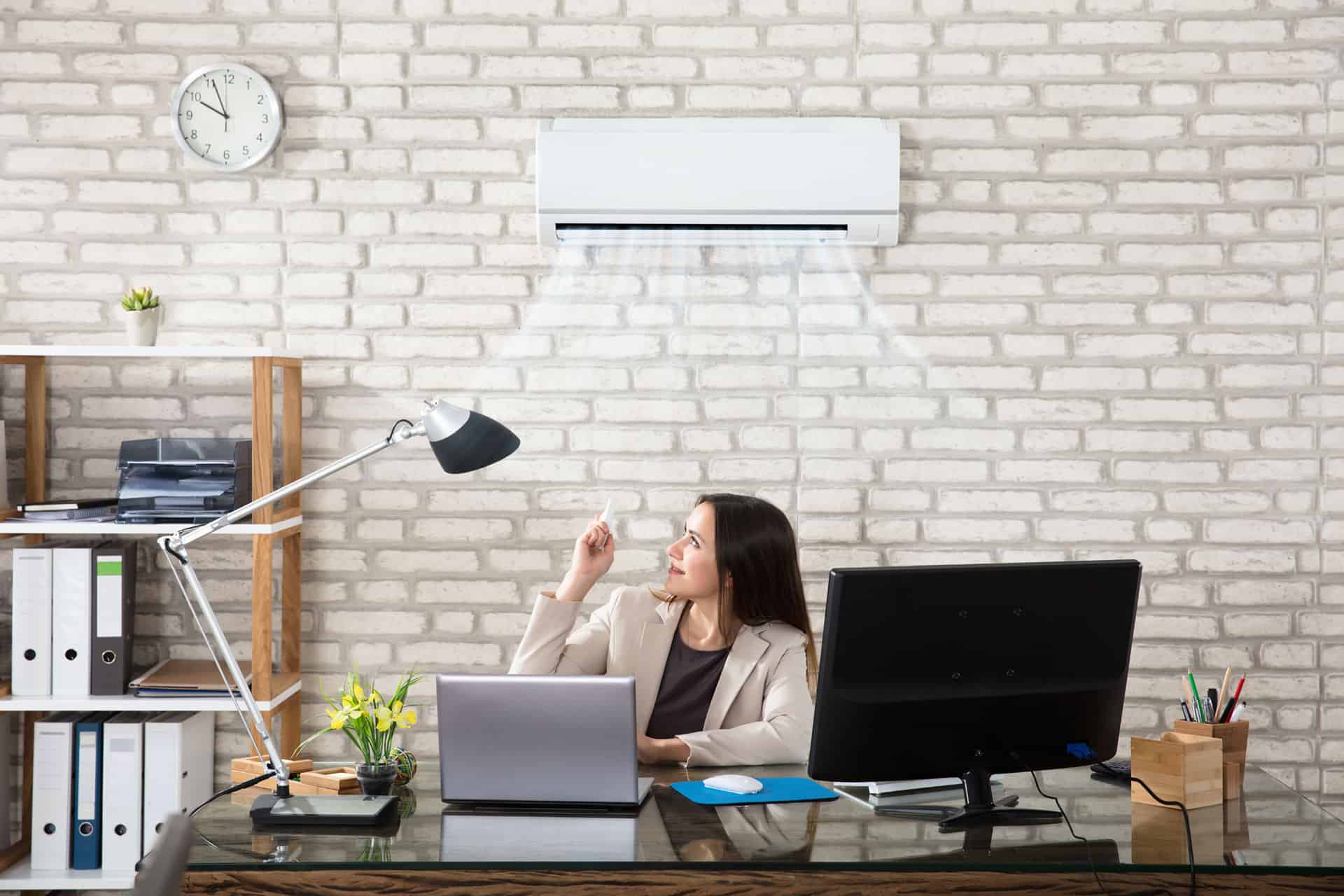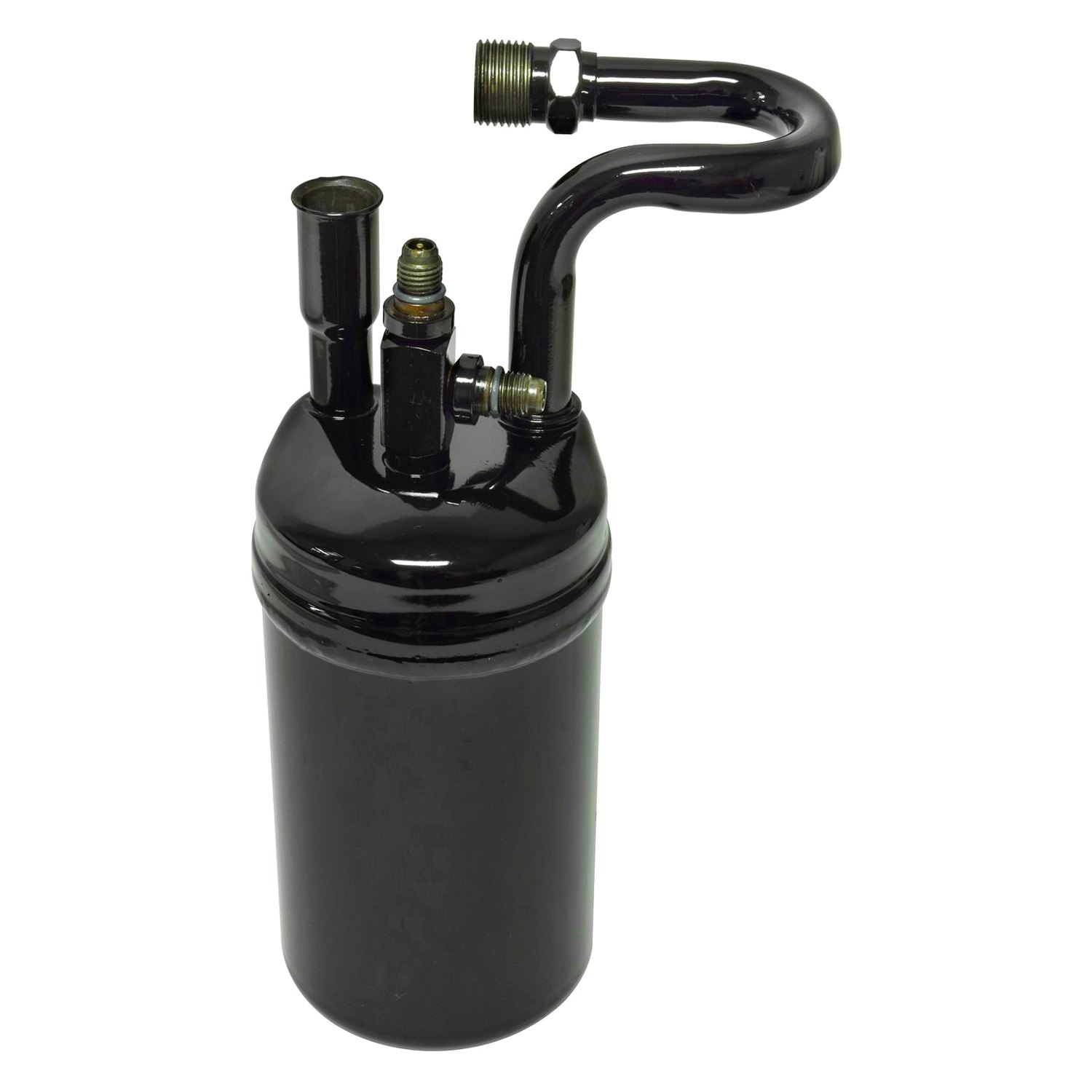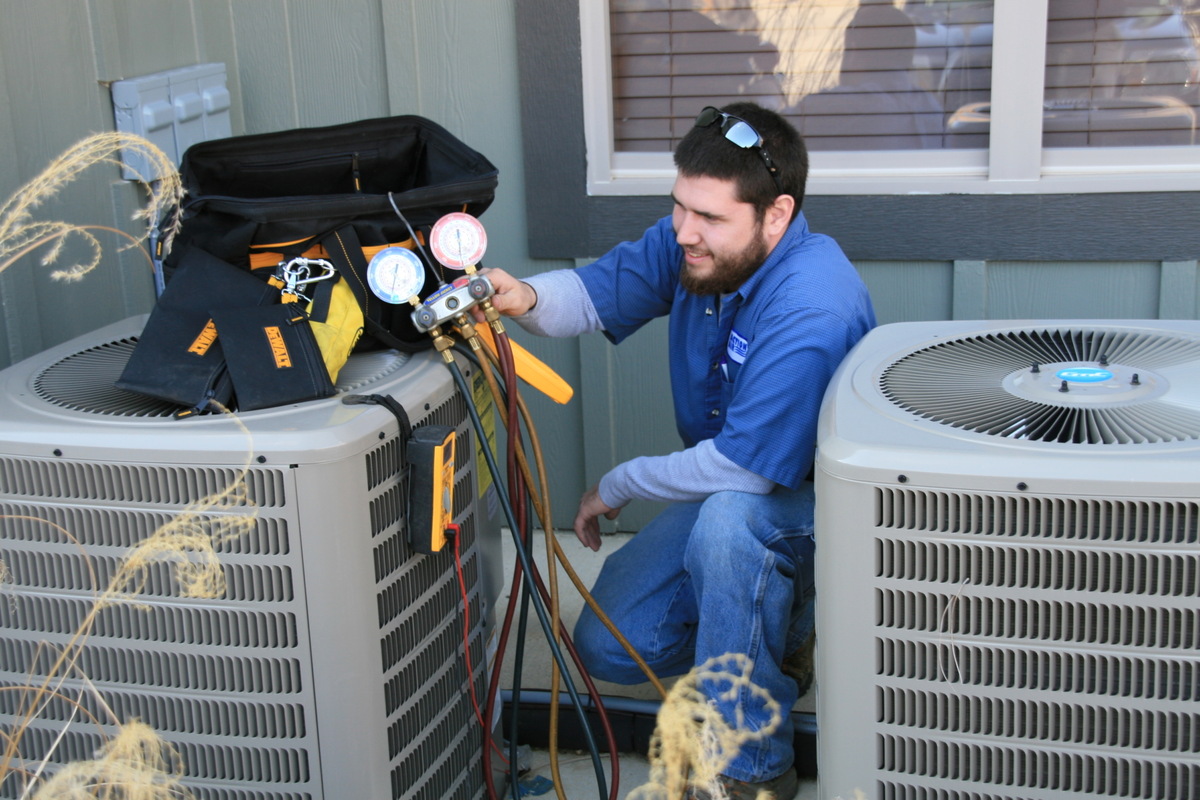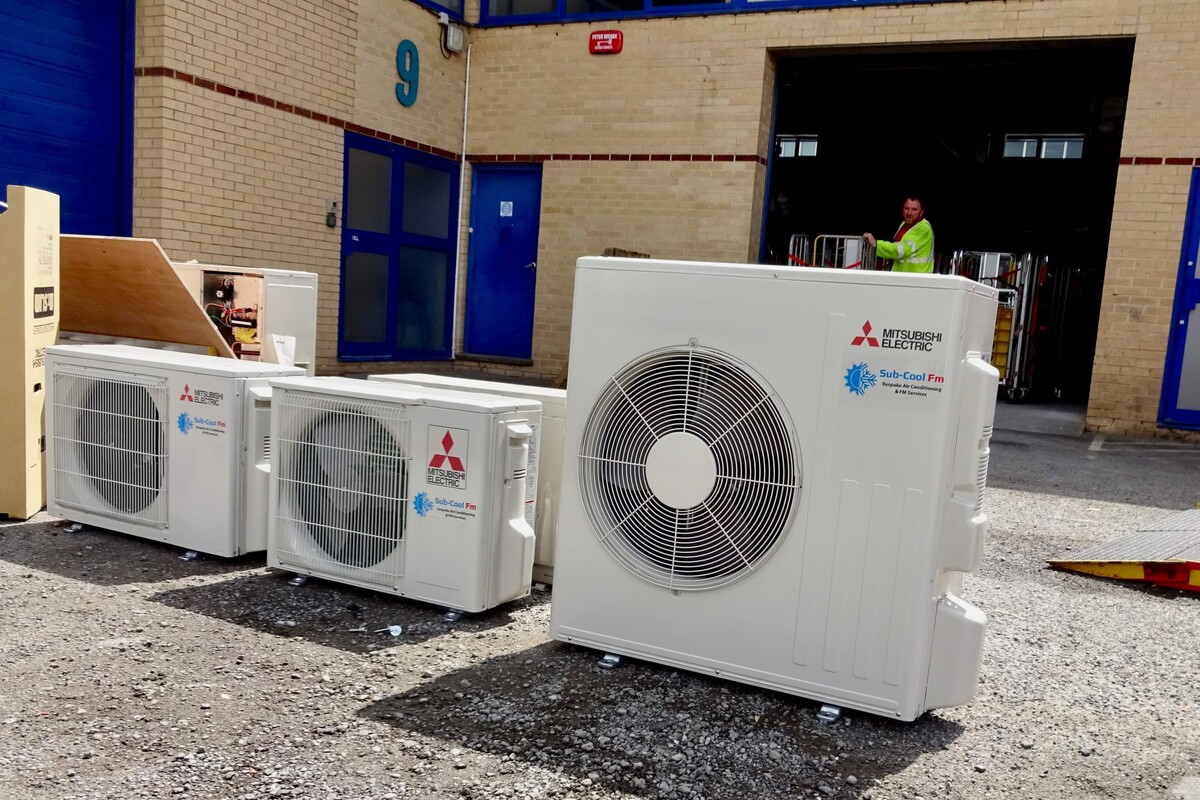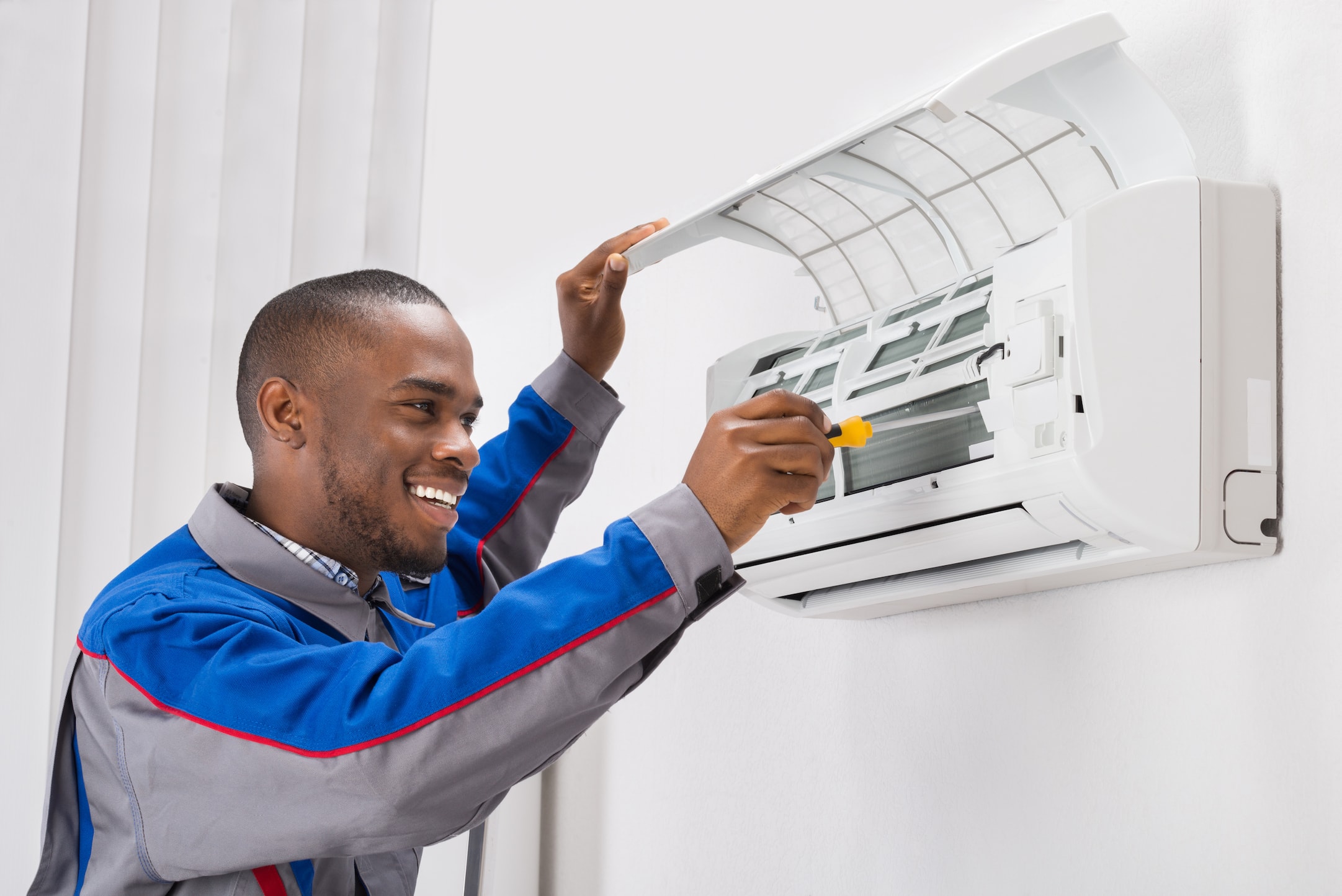Home>Home Maintenance>What Is Refrigeration Air Conditioning
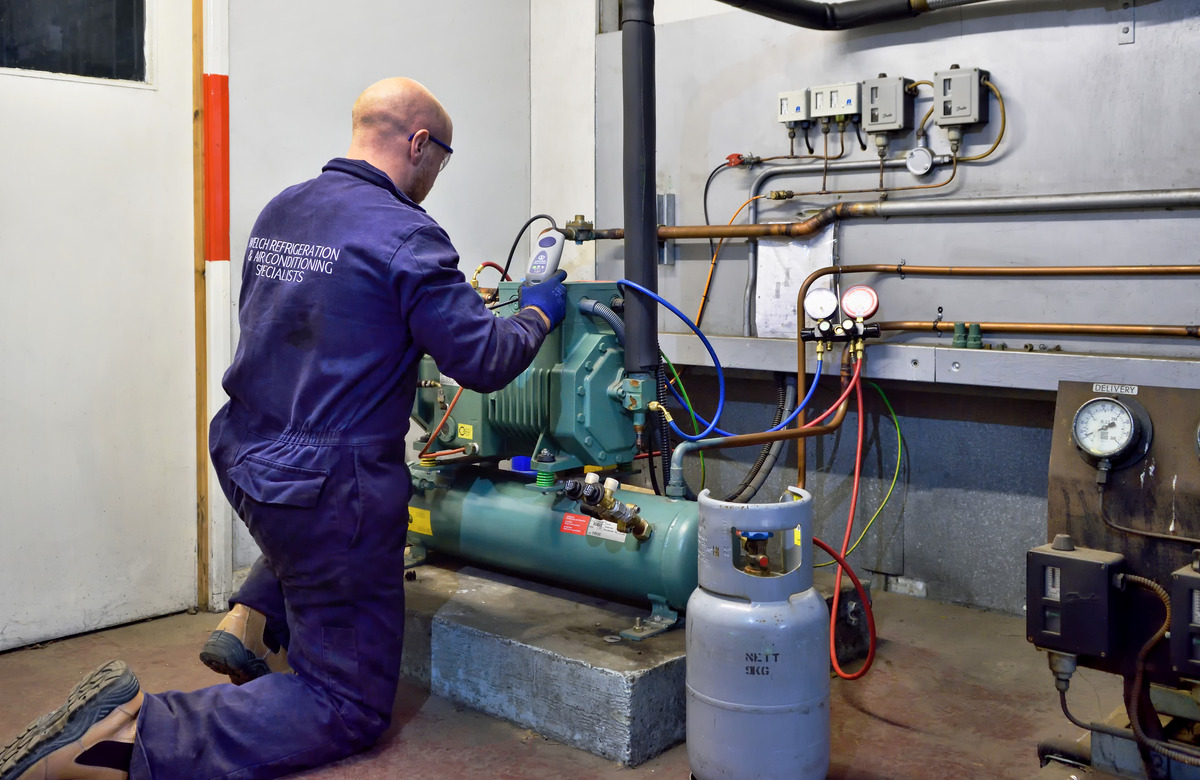

Home Maintenance
What Is Refrigeration Air Conditioning
Modified: August 27, 2024
Discover the basics of refrigeration air conditioning and its importance for home maintenance. Keep your home cool and comfortable with our expert tips and advice.
(Many of the links in this article redirect to a specific reviewed product. Your purchase of these products through affiliate links helps to generate commission for Storables.com, at no extra cost. Learn more)
Introduction
Welcome to the world of refrigeration air conditioning! If you’ve ever wondered how your home stays cool during those hot summer days or how a refrigerator keeps your food fresh, then you’re in the right place. In this article, we will explore the fascinating world of refrigeration air conditioning, its history, principles, components, working, types, applications, advantages, and maintenance.
Refrigeration air conditioning is an essential part of our daily lives, providing us with comfort, convenience, and safety. Whether it’s your home, office, car, or any other enclosed space, the ability to control the temperature and humidity levels is crucial for maintaining a pleasant and healthy environment.
So, what exactly is refrigeration air conditioning? In basic terms, it is a process that involves removing heat from a space or an object to lower its temperature. This is achieved by circulating refrigerant fluids through a system of components, which we will explore in detail later on.
The concept of refrigeration and air conditioning has been around for centuries, with ancient civilizations using various methods to cool their living spaces. However, it wasn’t until the 19th century that modern refrigeration systems, as we know them today, started to emerge.
With the advancement of technology, refrigeration air conditioning systems have become more efficient, environmentally friendly, and readily accessible. Today, they play a vital role in various industries, such as food preservation, industrial processes, medicine, and of course, residential comfort.
In order to understand the functioning of refrigeration air conditioning, it’s important to grasp the underlying principles. At its core, this process is based on the principles of thermodynamics, specifically the laws of conservation of energy and heat transfer.
A typical refrigeration air conditioning system consists of several key components that work together to provide cooling. These include a compressor, condenser, evaporator, expansion valve, and refrigerant. Each component has a specific function, which we will discuss in detail later on.
From central air conditioning units to window air conditioners and refrigerators, there are various types of refrigeration air conditioning systems available. Each type offers unique features and advantages, catering to different needs and preferences.
Refrigeration air conditioning has a wide range of applications, from maintaining comfortable indoor environments in homes, offices, and shopping malls, to preserving perishable goods in supermarkets and warehouses.
While refrigeration air conditioning provides numerous benefits, it also has its share of drawbacks. These include high energy consumption, environmental concerns related to refrigerant leakage, and the need for regular maintenance and troubleshooting.
In the following sections of this article, we will delve into the history, principles, components, working, types, applications, advantages, and maintenance of refrigeration air conditioning systems. So, let’s embark on this exciting journey and learn more about the fascinating world of refrigeration air conditioning!
Key Takeaways:
- Refrigeration air conditioning is a fascinating technology that removes heat and moisture from the air to create comfortable indoor environments, improving our quality of life and preserving perishable goods.
- While refrigeration air conditioning offers improved comfort, temperature control, and air quality, it also has drawbacks such as energy consumption, environmental impact, and the need for regular maintenance.
Read more: What Is A Register In Air Conditioning
Definition of Refrigeration Air Conditioning
Refrigeration air conditioning, often simply referred to as air conditioning, is a technology that involves the control and regulation of temperature, humidity, and air quality in an enclosed space. It is primarily used to provide comfort and create favorable living or working conditions for individuals.
At its core, refrigeration air conditioning is the process of removing heat and moisture from the air, thus lowering the temperature and creating a comfortable environment. It accomplishes this by utilizing the principles of thermodynamics and heat transfer.
The main purpose of refrigeration air conditioning is to maintain a desired temperature and humidity level within a confined space, regardless of the external weather conditions. This is done by circulating cool air and removing excess heat and humidity.
Refrigeration air conditioning systems work on the principle of heat transfer, which involves the transfer of heat from one medium to another. They use a refrigerant, a fluid that has the ability to absorb and release heat, to facilitate the cooling process.
The process begins with the compressor, which compresses the refrigerant gas, raising its temperature and pressure. The high-pressure gas then flows into the condenser, where it is cooled and condensed into a liquid state, releasing heat to the external environment.
The cooled liquid refrigerant then passes through an expansion valve, which lowers its pressure and temperature. This causes the refrigerant to evaporate and absorb heat from the air, thus cooling it down. The cooled air is then circulated back into the room through the evaporator.
During this process, the moisture in the air condenses on the evaporator coil, reducing the humidity level. The excess moisture is collected and drained out of the system, ensuring a comfortable and dry indoor environment.
The refrigeration air conditioning system continues this cycle of heat absorption, compression, and heat release until the desired temperature and humidity levels are achieved. The system is controlled by a thermostat, which monitors the temperature and activates the cooling process when necessary.
Refrigeration air conditioning has become an essential part of modern life, providing comfort in homes, offices, commercial spaces, and vehicles. It has revolutionized the way we live and work, allowing us to create and maintain optimal living and working conditions regardless of the external climate.
Overall, refrigeration air conditioning is a technology that has dramatically improved our quality of life by providing us with comfortable and controlled indoor environments. Whether it’s escaping the summer heat or creating optimal conditions for work and relaxation, air conditioning has become an indispensable part of our daily lives.
History of Refrigeration Air Conditioning
The history of refrigeration air conditioning dates back to ancient civilizations that found creative ways to cool their living spaces. One of the earliest known methods was the use of evaporative cooling, where water was evaporated to lower the temperature of the surrounding air.
However, the modern era of refrigeration air conditioning began in the 19th century with the advent of mechanical cooling systems. The development of these systems was driven by the need to find effective ways to preserve food, especially for long-distance transportation.
In 1834, Jacob Perkins, an American physicist and inventor, patented the first functioning vapor-compression refrigeration system. This system used ether as the refrigerant and relied on compression and expansion of the gas to produce cooling. Although the system was not widely adopted, it laid the foundation for future advancements in the field.
The breakthrough for practical refrigeration air conditioning came in 1902 when Willis Carrier, an American engineer, invented the first modern air conditioning system. Carrier’s invention was initially designed to control humidity in a printing plant, but it also had a significant cooling effect.
Carrier’s system used a rotary compressor and a series of coils to cool the air and remove moisture. This invention revolutionized various industries, particularly the textile and food processing industries, by providing precise control over temperature and humidity conditions.
With the advent of electric power in the early 20th century, refrigeration air conditioning systems became more accessible and widespread. The availability of electricity allowed for the development of more efficient and convenient cooling technologies.
In the 1920s, residential air conditioning systems started to emerge, although they were initially only affordable to the wealthy. These systems were bulky and expensive, consisting of large units located outside of the house connected to ductwork that distributed cool air throughout the building.
Over the years, advancements in technology and manufacturing processes made air conditioning systems more compact, affordable, and efficient. The introduction of window air conditioners in the 1940s made it possible for individual households to have air conditioning.
In the latter half of the 20th century, central air conditioning systems became increasingly popular, allowing for the cooling of entire homes or buildings through a central unit connected to ducts in each room. This made it more convenient and efficient to maintain comfortable indoor environments.
Today, refrigeration air conditioning systems continue to evolve and improve. The focus is not only on providing cooling but also on energy efficiency, environmental sustainability, and advanced control systems.
The history of refrigeration air conditioning is a testament to human ingenuity and the desire for comfort and convenience. From ancient methods of cooling to the sophisticated systems we have today, the journey of refrigeration air conditioning has transformed the way we live and work, making our lives more comfortable and enjoyable.
Principles of Refrigeration Air Conditioning
Refrigeration air conditioning operates on fundamental principles of thermodynamics and heat transfer. Understanding these principles is essential for comprehending how the system cools and maintains the desired temperature and humidity levels in a space.
One of the primary principles used in refrigeration air conditioning is the conservation of energy. According to this principle, energy can neither be created nor destroyed; it can only be transferred from one form to another. In the case of refrigeration air conditioning, energy is transferred in the form of heat.
The second principle at work is heat transfer. Heat always flows from a region of higher temperature to a region of lower temperature until thermal equilibrium is achieved. In the process of refrigeration air conditioning, heat is removed from the indoor space and released to the outdoor environment.
The refrigeration cycle, which is the basis for cooling in air conditioning systems, relies on four essential components: the compressor, condenser, evaporator, and expansion valve.
The compressor is responsible for pressurizing the refrigerant, raising its temperature and pressure. As a result of compression, the refrigerant gas becomes superheated.
The hot, high-pressure refrigerant then enters the condenser, which is usually located outside the space being cooled. In the condenser, the refrigerant is cooled and condensed into a liquid state by transferring heat to the surrounding air or water. This heat release causes the refrigerant to transition from a gas to a liquid.
From the condenser, the liquid refrigerant flows through the expansion valve, which reduces its pressure and temperature. This sudden drop in pressure and temperature causes the refrigerant to expand, evaporate, and absorb heat from the indoor air as it returns to a gaseous state.
The cooled air is then circulated into the space being conditioned through the evaporator. The evaporator is a heat exchange coil that allows the refrigerant to absorb heat from the indoor air, effectively cooling it. As the air passes over the cold evaporator coil, moisture in the air also condenses, reducing humidity.
After absorbing heat from the indoor air, the refrigerant returns to the compressor to restart the cycle. This continuous process of heat absorption, compression, heat release, and expansion allows refrigeration air conditioning systems to cool and maintain comfortable indoor environments.
Another important principle employed in refrigeration air conditioning is the refrigerant’s ability to absorb and release heat as it changes state from a gas to a liquid and vice versa. This property of refrigerants makes them vital for the cooling process and is the reason why specific fluids with desirable properties are used in air conditioning systems.
The principles of thermodynamics and heat transfer, along with the refrigeration cycle, work in harmony to provide cooling in refrigeration air conditioning systems. Understanding these principles allows for a deeper appreciation of how air conditioning works and the science behind its operation.
By leveraging these principles, refrigeration air conditioning systems can create comfortable indoor environments by effectively removing heat and moisture, providing us with optimal living and working conditions, regardless of the outside temperature.
Components of Refrigeration Air Conditioning System
A refrigeration air conditioning system consists of several key components that work together to provide cooling and maintain comfortable indoor environments. Each component plays a specific role in the overall operation of the system. Let’s explore the main components of a typical refrigeration air conditioning system:
- Compressor: The compressor is the heart of the air conditioning system. Its function is to compress and raise the pressure of the refrigerant gas, which increases its temperature. This high-pressure, high-temperature gas is then sent to the condenser for further cooling.
- Condenser: The condenser is responsible for transferring the heat from the hot refrigerant gas to the surrounding environment. It consists of a network of coils through which the refrigerant flows. As the hot gas comes into contact with the cooler exterior air or water, it condenses into a high-pressure liquid. The heat released during this process is expelled to the outside environment.
- Evaporator: The evaporator is where the refrigerant absorbs heat from the indoor air, causing the air to cool down. It consists of a coil or a series of fins that allow for efficient heat exchange. As the refrigerant evaporates, it changes from a liquid to a gas, absorbing heat from the surrounding air. The cooled air is then circulated back into the room through the air conditioning system’s ductwork or vents.
- Expansion Valve: The expansion valve is a crucial component that controls the flow and pressure of the refrigerant entering the evaporator. It acts as a throttle, regulating the amount of refrigerant that enters the evaporator coil. The expansion valve reduces the pressure of the refrigerant, causing it to expand rapidly. This expansion leads to a significant drop in temperature, allowing the refrigerant to absorb heat effectively.
- Refrigerant: The refrigerant is the fluid that circulates through the air conditioning system, transferring heat from one component to another. It undergoes phase changes from a gas to a liquid and back to a gas during the refrigeration cycle. Refrigerants have specific properties that make them suitable for heat exchange and efficient cooling. Common refrigerants used in air conditioning systems include R-410A, R-22, and R-32.
- Air Handler: The air handler is responsible for circulating the cooled air throughout the building or space being conditioned. It consists of a blower fan, filter, and sometimes a heating element. The blower fan pulls the air from the room and forces it over the evaporator coils, cooling it in the process. The filtered and cooled air is then distributed back into the room through the vents or ductwork.
- Thermostat: The thermostat acts as a control device that regulates the operation of the air conditioning system. It monitors the temperature of the indoor space and sends signals to the compressor and blower fan to turn on or off as needed. The thermostat allows users to set their desired temperature and maintains it by activating the cooling cycle when the temperature rises above the set point.
These are the primary components of a refrigeration air conditioning system. Additionally, the system may include other components such as fans, filters, sensors, and control boards, which further enhance its functionality and efficiency.
Understanding the roles of these components helps to appreciate the complexity and functionality of a refrigeration air conditioning system. Every component contributes to the overall cooling process, ensuring that we can enjoy comfortable indoor environments even on the hottest days.
Read more: What Is The Purpose Of Air Conditioning
Working of Refrigeration Air Conditioning System
The working of a refrigeration air conditioning system involves a series of processes that work together to remove heat from the indoor environment and maintain a comfortable temperature. Let’s explore how these systems operate:
- Compressor: The process begins with the compressor, which plays a crucial role in raising the pressure and temperature of the refrigerant gas. The compressor draws in low-pressure refrigerant gas from the evaporator and compresses it, increasing its pressure and temperature.
- Condenser: The high-pressure, high-temperature refrigerant gas is then sent to the condenser. In the condenser, the refrigerant releases heat to the surrounding environment, typically through the use of coils and a fan. As the refrigerant cools down, it changes from a gas to a high-pressure liquid.
- Expansion Valve: From the condenser, the high-pressure liquid refrigerant passes through the expansion valve. This valve serves as a throttle, controlling the flow of the refrigerant into the evaporator. As the refrigerant passes through the expansion valve, its pressure decreases, causing a rapid expansion and a significant drop in temperature.
- Evaporator: The cold low-pressure refrigerant now enters the evaporator where it absorbs heat from the indoor air. The evaporator consists of coils or fins that facilitate heat exchange. As the refrigerant evaporates and absorbs heat, the air passing over the evaporator coils is cooled down. The cooled air is then blown into the room by a blower fan.
- Return to the Compressor: The now-warmed refrigerant vapor returns to the compressor to begin the cycle again. The process continues as long as the air conditioning system is running and the desired temperature hasn’t been reached.
When the thermostat detects that the desired temperature has been achieved, it signals the system to shut off. The compressor stops compressing the refrigerant, and the cooling process ceases. As the temperature rises again, the thermostat sends a signal to restart the system, and the cycle repeats to maintain the desired temperature.
During the cooling process, the refrigerant undergoes phase changes from a gas to a liquid and back to a gas, absorbing and releasing heat at different stages. The continual circulation of the refrigerant through the compressor, condenser, expansion valve, and evaporator ensures a consistent cooling effect.
It’s important to note that while the primary function of a refrigeration air conditioning system is to cool a space, it also dehumidifies the air. As the air passes over the cold evaporator coils, moisture condenses, reducing the humidity level in the room.
Overall, the working of a refrigeration air conditioning system is based on the principles of thermodynamics and heat transfer. Through the continuous circulation and phase changes of the refrigerant, these systems allow us to create and maintain optimal indoor environments, providing comfort and relief from high temperatures.
Refrigeration air conditioning works by removing heat from the air inside a building and transferring it outside, creating a cooler indoor environment. Regular maintenance, such as cleaning filters and coils, can help improve efficiency and extend the lifespan of the system.
Types of Refrigeration Air Conditioning Systems
Refrigeration air conditioning systems come in various types, each designed to cater to different needs and applications. Let’s explore some of the common types of air conditioning systems:
- Window Air Conditioner: Window air conditioners are compact units designed to be mounted in a window or a hole in a wall. These systems consist of a single unit that houses all the components, including the compressor, condenser, evaporator, and expansion valve. Window air conditioners are typically used to cool individual rooms or small spaces.
- Split Air Conditioner: Split air conditioners consist of two separate units: an indoor unit and an outdoor unit. The indoor unit contains the evaporator and the blower fan, while the outdoor unit houses the compressor and the condenser. Split air conditioners offer more flexibility in terms of installation and can cool larger areas compared to window air conditioners. They are commonly used in residential and commercial settings.
- Ductless Mini-Split Air Conditioner: Ductless mini-split air conditioners are similar to split air conditioners but without the need for ductwork. These systems consist of an outdoor unit and one or more indoor units that are mounted on the wall or ceiling. They allow for zone cooling, where different areas or rooms can be cooled independently. Ductless mini-split systems offer energy efficiency and flexibility in temperature control.
- Central Air Conditioning: Central air conditioning systems are designed to cool entire homes or buildings. These systems use a network of ducts to distribute cool air throughout the space. The central unit typically contains the compressor and the condenser, while the evaporator coil is housed in a separate unit, usually located in the basement or attic. Central air conditioning provides consistent cooling to all areas of a building and can be controlled centrally.
- Packaged Air Conditioner: Packaged air conditioners are self-contained units that contain all the components, including the compressor, condenser, evaporator, and expansion valve, in a single cabinet. These units are typically installed on the roof or directly on the exterior wall of a building. Packaged air conditioners are commonly used in commercial buildings and industrial settings.
- VRF/VRV Air Conditioning: Variable Refrigerant Flow (VRF) or Variable Refrigerant Volume (VRV) air conditioning systems are advanced multi-split systems that offer precise temperature control and energy efficiency. These systems use a single outdoor unit connected to multiple indoor units. Each indoor unit can operate independently, allowing for individual temperature control in different zones or rooms.
Each type of air conditioning system offers unique features and advantages, catering to different needs and preferences. Factors to consider when selecting a system include the size of the space, the level of cooling required, energy efficiency, installation requirements, and budget.
It’s essential to consult with a qualified HVAC professional to determine the most suitable air conditioning system for your specific needs. They can assess your requirements and recommend the type and size of the system that will provide optimal cooling and comfort for your space.
Regardless of the type of air conditioning system chosen, proper installation, regular maintenance, and correct usage are essential for optimum performance and longevity.
Applications of Refrigeration Air Conditioning
Refrigeration air conditioning systems have a wide range of applications, catering to various industries and environments. Let’s explore some of the common applications of refrigeration air conditioning:
- Residential: One of the most common applications of refrigeration air conditioning is in residential spaces. Air conditioners are used to cool individual rooms, apartments, or whole houses. The ability to control indoor temperature and humidity levels provides comfort and a pleasant living environment, especially during hot summer months.
- Commercial Buildings: Refrigeration air conditioning is extensively used in commercial buildings such as offices, retail stores, restaurants, and hotels. These systems maintain comfortable indoor conditions for employees, customers, and guests. Central air conditioning or ductless mini-split systems are commonly employed to provide consistent cooling throughout large spaces.
- Industrial Processes: Refrigeration air conditioning plays a crucial role in various industrial processes. Industrial refrigeration systems are used to cool and preserve perishable goods, such as food and pharmaceuticals. They are also employed in manufacturing processes that require precise temperature control, such as in the production of electronics, chemicals, and plastics.
- Data Centers: Data centers require precise temperature and humidity control to ensure the optimum functioning of computer systems. Refrigeration air conditioning systems are used to cool these facilities, preventing overheating of servers and other equipment. The reliability and efficiency of these systems are vital for maintaining data integrity and preventing equipment failures.
- Transportation: Refrigeration air conditioning is integral to the transportation and storage of perishable goods. Refrigerated trucks and containers equipped with cooling systems ensure that food, pharmaceuticals, and other temperature-sensitive products remain fresh during transit. This is essential for the preservation of quality and prevention of spoilage.
- Healthcare Facilities: Hospitals, clinics, and laboratories require controlled environments to maintain the health and safety of patients and ensure the effectiveness of medical procedures. Refrigeration air conditioning systems are used to regulate temperature and humidity in operating rooms, isolation units, and pharmaceutical storage areas.
- Research Facilities: Research facilities, such as laboratories and testing centers, often require precise temperature and humidity control for experiments, equipment, and sample storage. Refrigeration air conditioning systems provide the necessary conditions to maintain accuracy and integrity in scientific research and testing.
In addition to these applications, refrigeration air conditioning is utilized in various other settings, including schools, gyms, theaters, shopping malls, and vehicles. Its widespread use demonstrates the importance of creating and maintaining comfortable, controlled, and healthy indoor environments in different sectors.
The advancements in refrigeration air conditioning technology have allowed for increased energy efficiency and the use of more environmentally friendly refrigerants. This enables businesses and individuals to reduce their environmental impact while still enjoying the benefits of cooling and comfort.
Regardless of the application, proper installation, routine maintenance, and regular servicing are essential for optimizing the performance and longevity of refrigeration air conditioning systems. Regular inspections, cleaning of filters, and refrigerant checks are among the maintenance tasks that should be carried out to ensure the system continues to operate efficiently and effectively.
Overall, refrigeration air conditioning systems provide comfort, preserve goods, maintain critical environments, and contribute to the quality of life in various industries and settings.
Advantages and Disadvantages of Refrigeration Air Conditioning
Refrigeration air conditioning offers numerous advantages that contribute to our comfort and well-being. However, like any technology, it also has its drawbacks. Let’s explore the advantages and disadvantages of refrigeration air conditioning:
- Advantages:
- Improved Comfort: The primary advantage of refrigeration air conditioning is the ability to create and maintain comfortable indoor environments. It provides relief from high temperatures, controls humidity levels, and improves air quality, contributing to our overall comfort and well-being.
- Temperature Control: Refrigeration air conditioning allows for precise temperature control, enabling us to set our desired temperature and maintain it consistently. This is essential for adapting to different weather conditions and ensuring a pleasant living or working environment.
- Humidity Control: By removing excess moisture from the air, refrigeration air conditioning helps control humidity levels. This is especially beneficial in humid environments, as it prevents the growth of mold and mildew while enhancing our comfort.
- Improved Air Quality: Air conditioning systems incorporate filters that remove dust, allergens, and pollutants from the air, leading to improved indoor air quality. This is particularly beneficial for individuals with allergies or respiratory conditions.
- Increased Productivity: Comfortable working environments created by refrigeration air conditioning can lead to increased productivity. Employees can focus better on their tasks when they are not distracted by extreme temperatures or discomfort.
- Preservation of Perishable Goods: Refrigeration air conditioning systems are essential for preserving perishable goods. They prevent spoilage and ensure the freshness and safety of food, pharmaceuticals, and other temperature-sensitive products during transportation and storage.
- Flexibility and Zoning: Some air conditioning systems allow for zoning, which means different rooms or areas can be cooled independently. This provides flexibility and energy efficiency, as cooling can be customized based on usage and occupancy.
- Disadvantages:
- Energy Consumption: One of the primary disadvantages of air conditioning is its high energy consumption. Cooling a space requires a significant amount of electricity, leading to increased energy bills and environmental impact. However, newer systems are becoming more energy-efficient.
- Environmental Impact: Some refrigerants used in air conditioning systems can contribute to global warming or deplete the ozone layer if released into the atmosphere. However, modern systems are transitioning to more environmentally friendly refrigerants with lower environmental impact.
- Maintenance and Upkeep: Refrigeration air conditioning systems require regular maintenance to ensure optimal performance. This includes cleaning or replacing filters, checking refrigerant levels, and servicing components. Neglecting maintenance can result in reduced efficiency and costly repairs.
- Initial Cost and Installation: Air conditioning systems can have a high upfront cost, especially for larger or more complex systems. Additionally, installing ductwork or retrofitting existing structures can be challenging and expensive.
- Dry Air: Air conditioning can sometimes contribute to dry indoor air, especially in arid climates or during prolonged use. This can cause discomfort, dry skin, and respiratory issues. However, humidifiers can be used to counteract this effect.
- Noise Levels: Air conditioning units can generate noise, particularly window or through-the-wall units. This noise can be disruptive, especially in quiet environments or during nighttime. However, modern air conditioning systems are designed to operate quietly.
- Dependence on Electricity: Air conditioning systems rely on electricity to function. Power outages or disruptions can lead to the loss of cooling, causing discomfort during hot weather.
Understanding the advantages and disadvantages of refrigeration air conditioning systems allows users to make informed decisions and mitigate any potential drawbacks. It’s important to weigh the benefits against the costs and consider energy-efficient options to minimize environmental impact and operational expenses.
Regardless of the disadvantages, refrigeration air conditioning plays a pivotal role in our lives, providing us with comfort, improved indoor environments, and the preservation of perishable goods. As technology continues to advance, efforts are being made to address the drawbacks, making air conditioning more sustainable, efficient, and eco-friendly.
Maintenance and Troubleshooting of Refrigeration Air Conditioning System
Regular maintenance and troubleshooting are essential for ensuring the optimal performance and longevity of a refrigeration air conditioning system. By following proper maintenance practices and promptly addressing issues, you can prevent breakdowns, increase energy efficiency, and extend the lifespan of your system. Let’s explore some key maintenance tasks and troubleshooting tips:
Maintenance:
- Clean or Replace Air Filters: Dirty or clogged air filters can restrict airflow, reduce cooling efficiency, and strain the system. Clean or replace the air filters regularly, typically every one to three months, depending on usage.
- Clean the Condenser Coils: Over time, the condenser coils may accumulate dirt, debris, and dust, reducing their ability to release heat. Clean the coils annually using a soft brush or compressed air to ensure optimal heat transfer.
- Inspect and Clean the Evaporator Coil: Inspect the evaporator coil for debris and dirt buildup. Clean it gently with a soft brush or a vacuum cleaner to maintain efficient heat absorption and prevent mold or mildew growth.
- Check Refrigerant Levels: Low refrigerant levels can indicate a leak or improper charging, affecting cooling performance. Consult a professional to check and recharge the refrigerant if necessary. Refrigerant leaks should be promptly repaired.
- Clear Obstructions: Ensure that the area around the outdoor unit is clear of vegetation, debris, or any other obstructions. This allows for proper airflow and heat dissipation from the condenser.
- Inspect and Clean Fan Blades: Check the fan blades for any dirt or debris buildup. Clean them if needed to ensure smooth operation and proper airflow.
- Monitor Thermostat Settings: Verify that the thermostat is functioning properly and accurately reflecting the desired temperature. Replace batteries if necessary and consider upgrading to a programmable thermostat for energy-saving features.
- Check and Tighten Electrical Connections: Inspect the electrical connections and terminals for signs of loose or corroded wires. Tighten any loose connections and ensure proper electrical functioning.
- Schedule Professional Maintenance: Arrange for professional maintenance at least once a year. HVAC technicians can perform a comprehensive inspection, cleanings, and system tune-ups to ensure optimal performance and catch potential issues before they become major problems.
Troubleshooting Tips:
When troubleshooting potential issues with your refrigeration air conditioning system, keep the following tips in mind:
- No Power: In case of a power outage, check electrical connections, breaker switches, and fuses to ensure proper power supply to the system.
- Poor Cooling: If the system is not cooling adequately, check if the air filters are clean, the thermostat settings are correct, and the vents are open and unobstructed. Insufficient cooling may also indicate a refrigerant leak, a malfunctioning compressor, or a faulty fan motor, requiring professional assistance.
- Loud or Unusual Noises: Unusual noises like rattling, grinding, or squealing may indicate issues with the fan motor, belts, or other components. Turn off the system and contact a professional for evaluation and repairs.
- Water Leaks: Water leaks may indicate a clogged condensate drain or a faulty drain pump. Check for clogs and clear them if necessary. If the issue persists, consult a professional.
- Frozen Evaporator Coil: A frozen evaporator coil could be due to restricted airflow, dirt buildup, or a refrigerant issue. Check and replace air filters, clean the evaporator coil, and verify refrigerant levels. If the problem persists, seek professional assistance.
- Unresponsive or Inaccurate Thermostat: If the thermostat does not respond or displays inaccurate readings, replace the batteries if applicable and check for loose connections. If the issue persists, it may require recalibration or replacement.
Keep in mind that while minor maintenance tasks and simple troubleshooting can be handled by homeowners, more complex issues or repairs should be entrusted to qualified HVAC professionals. Regular maintenance and timely troubleshooting greatly contribute to the efficiency, longevity, and performance of your refrigeration air conditioning system.
By following recommended maintenance practices and addressing issues promptly, you can ensure optimal cooling and comfort in your indoor space while avoiding costly repairs and minimizing energy consumption.
Conclusion
Refrigeration air conditioning systems have revolutionized the way we maintain comfortable indoor environments and preserve perishable goods. From humble beginnings to modern advancements, these systems have become an integral part of our daily lives, providing us with comfort, convenience, and improved air quality.
In this article, we explored the fascinating world of refrigeration air conditioning, delving into its definition, history, principles, components, working, types, applications, advantages, and maintenance. We learned that refrigeration air conditioning is a process that involves removing heat and moisture from the air to create a comfortable living or working environment.
Refrigeration air conditioning systems operate based on principles of thermodynamics, heat transfer, and the refrigeration cycle. Components such as compressors, condensers, evaporators, expansion valves, and refrigerants work together to cool the air and regulate temperature and humidity levels.
We discovered that refrigeration air conditioning has diverse applications, including residential spaces, commercial buildings, industrial processes, healthcare facilities, transportation, data centers, and research facilities. These systems provide comfort, productivity, preservation, and optimal conditions in various industries and settings.
While refrigeration air conditioning offers numerous advantages such as improved comfort, temperature and humidity control, and better air quality, it also has some disadvantages, including energy consumption, environmental impact, and the need for regular maintenance.
To ensure the optimal performance and longevity of refrigeration air conditioning systems, we discussed essential maintenance tasks, including cleaning filters, coils, and fans, checking refrigerant levels, and scheduling professional check-ups. We also provided troubleshooting tips to address common issues promptly.
In conclusion, refrigeration air conditioning is a remarkable technology that enhances our quality of life by providing comfortable environments and preserving perishable goods. It has come a long way since its early beginnings and continues to evolve, offering more energy-efficient and eco-friendly options. By understanding the principles, components, and maintenance requirements, we can maximize the efficiency and lifespan of our refrigeration air conditioning systems, ensuring cool comfort for years to come.
Frequently Asked Questions about What Is Refrigeration Air Conditioning
Was this page helpful?
At Storables.com, we guarantee accurate and reliable information. Our content, validated by Expert Board Contributors, is crafted following stringent Editorial Policies. We're committed to providing you with well-researched, expert-backed insights for all your informational needs.
